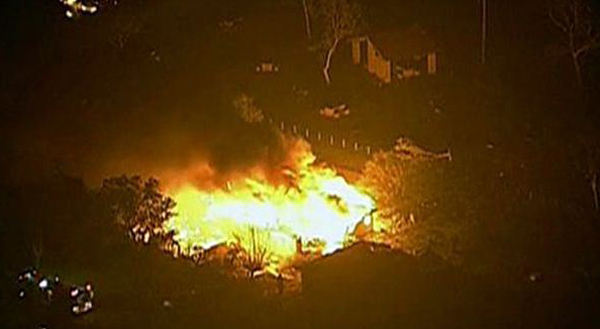- La Feria Community Holds Succesful Business Mixer Event
- Little Nashville to Take Place in Downtown Mercedes
- Lions Basketball Captures District Gold
- La Feria ISD Students Compete in Regional Chess Tournament
- Lions End First Half of 32-4A on a High Note
- La Feria ISD Held Another Successful Parent Conference
- Strong Appearance for Lions at Hidalgo Power Meet
- LFECHS Students Get to Meet Local Actress
- Students Participate in Marine Biology Camp
- Two LFECHS Students Qualify for All-State Band
Texas Senate to Vote on Chemical Safety
- Updated: June 1, 2015
by Eric Galatas/TNS

The 2013 explosion in West, Texas, killed 15 and resulted in damages surpassing $100 million. Proposed state legislation to reduce the chance of a repeat has cleared the House and awaits a vote in the Senate. Photo: VOA/Wikimedia Commons.
AUSTIN, Texas – A fertilizer plant in the town of West, Texas, exploded on April 17, 2013, killing 15 people, including 10 first responders. The plant had not been inspected in decades. Two bills – House Bills 684 and 942 – remain alive in the closing days of the legislative session that could help local governments protect communities such as West in the future.
Robin Schneider, executive director of the Texas Campaign for the Environment, said the bills would allow communities to adopt fire codes and let fire chiefs inspect fertilizer facilities, “which is common sense for something that is so explosive, but unfortunately our laws are not where they need to be just yet and we want to make sure that we get some progress on this before June 1 when our legislators go home.”
Schneider said the new laws also would give local fire chiefs the authority to require changes when facilities dealing with ammonium nitrate – the explosive fertilizer responsible for the West explosion – are not operating safely.
The proposals could reduce the chance of future catastrophes such as the one in West, she said, by implementing basic safety practices for dealing with explosive materials and letting first responders know what chemicals are stored where.
“The question,” she said, “is are we going to learn from the gaping holes in our safety standards and put things in place to prevent future disasters like that, or not?”
Fertilizer is big business in Texas. At least 74 facilities store at least 10,000 pounds of ammonium nitrate-based explosive material. Schneider said approximately 20,000 people live within a half-mile of these sites.
Texts are online for HB 684 and HB 942.


